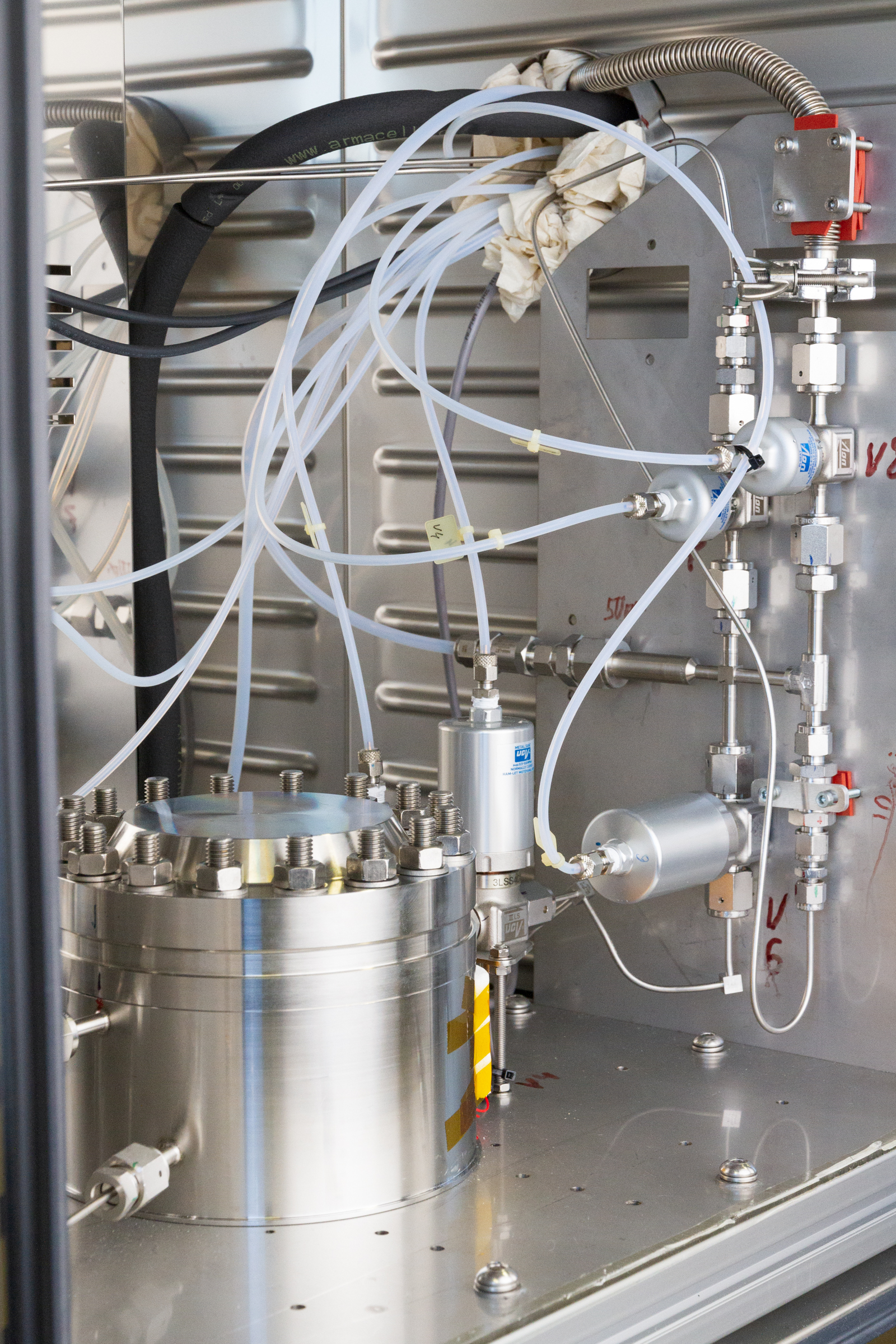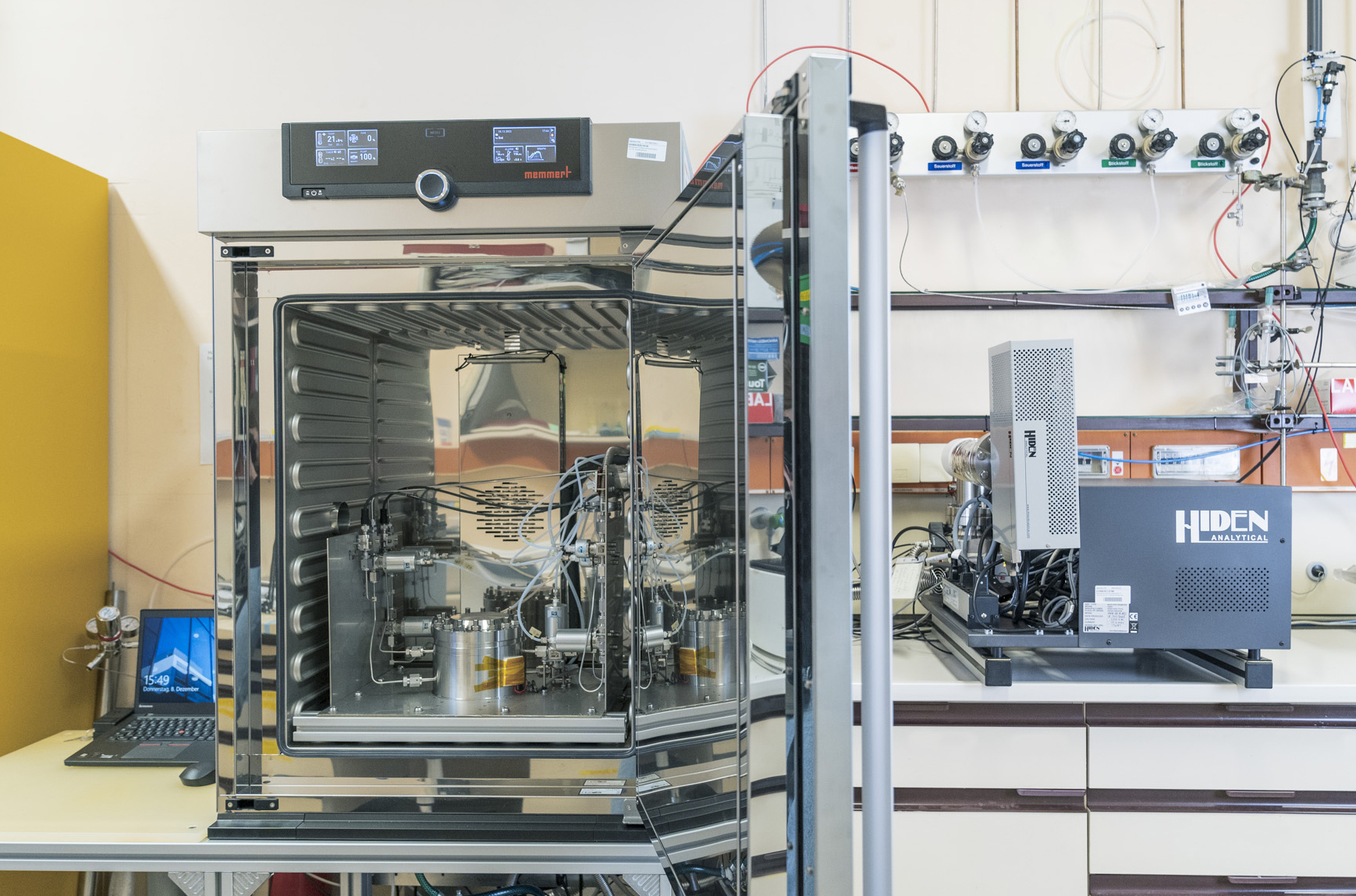As a sub-project of the H2-Mare technology platform, the H2Wind joint project aims to develop the scientific and technological basis for the world's first direct offshore hydrogen production. Among other things, ionomer membranes for electrolysis are being developed for this purpose. In addition to the electrochemical requirements, the membranes must also ensure the necessary gas purity, i.e. the crossover of hydrogen or oxygen must be minimized. To this end, the infrastructure available at the IGB for determining gas permeation at high pressures is being further expanded.
H2Wind – Self-sufficient offshore H2 electrolysis
The basic idea of the technology platform H2Mare is a direct use of offshore wind energy in electrolysis or power-to-X processes (PtX). In this context, technologies along the entire value chain are investigated and researched in the individual collaborative projects. The focal points range from electrical energy generated by wind turbines, to the offshore production of hydrogen and its synthesis products, to the analysis of a potential use of the produced valuable materials as raw materials for further energy and industrial processes. The development of the basics up to the design of an efficient and stable water electrolysis technology and storage technology for hydrogen pressure gas in offshore operation represents an essential contribution to the technology platform H2Mare.
The subproject of the H2-Mare technology platform, the H2Wind joint project aims to develop the scientific and technological basis for the world's first direct offshore hydrogen production. The work focuses on the fundamentals for an electrolysis technology for offshore operation, the possibilities for storage, and the optimal coordination of the subsystems to increase the efficiency of the overall system. Based on the developed fundamentals, a first hydrogen electrolysis research test plant with a capacity of up to 5 MW is to be designed and built by the end of the project, which can be investigated with regard to the requirements of an offshore operation.
In the H2-Wind project, ionomer membranes for electrolysis will be developed, among other things. In addition to the electrochemical requirements, the membranes must also ensure the necessary gas purity, i.e. the crossover of hydrogen and oxygen must be minimized even at the planned operating temperatures and pressures and pressure differences. This information is essential to drive material selection and membrane thickness optimization.
For this purpose, a test rig has been set up at the IGB that allows membrane burst tests to be carried out and gas permeation through the membrane to be evaluated. This is also necessary for evaluating plant safety. The experiments on the compressive strength and gas permeation of new membranes allow statements to be made on explosion safety and overall plant integrity as well as statements on membrane stability and performance, which are of central importance for the design of the electrolysis stacks. In addition, the tests will provide statements on the mechanical stability of the membranes for scaling up the membrane area to industrial configurations.
The capabilities of the test rig are to be expanded as part of this project and ionomer membranes from the project partners are to be characterized. These data will be used by the partners in the project to optimize the membranes with regard to gas crossover.
Project information
Project title
H2Wind – Self-sufficient offshore H2 electrolysis
Project duration
April 2021 – March 2025
Project partners
- Siemens Energy Global GmbH & Co. KG (Coordinator)
- Salzgitter Mannesmann Research GmbH
- FUMATECH BWT GmbH
- Leibniz University Hannover
- Fraunhofer Institute for Microstructure of Materials and Systems (IMWS)
- Fraunhofer Institute for Machine Tools and Forming Technology (IWU)
- Fraunhofer Institute for Mechanics of Materials (IWM)
- Fraunhofer Institute for Wind Energy Systems (IWES)
- Fraunhofer Institute for Chemical Technology (ICT)
- Fraunhofer Institute for Interfacial Engineering and Biotechnology (IGB)
Funding
We would like to thank the German Federal Ministry of Education and Research (BMBF) for funding the project »H2-Wind«, grant number 03HY301D.

 Fraunhofer Institute for Interfacial Engineering and Biotechnology IGB
Fraunhofer Institute for Interfacial Engineering and Biotechnology IGB
